Plot summary
The story is set in a then-future era of the late 1950s, and is presented in the form of a letter from the protagonist, geologist Kenneth Staples, to a prospective employer, explaining why he desires to leave his present job.
Staples has been working for paleontologist/inventor Gilmore Platt, whose stereoscopic prospecting device can locate and reveal buried fossils in full detail. From an archeological colleague, Dr. Wilhelmi of Zurich, Platt gets the idea of using an electrolytic bath to restore the specimens he has been retrieving to their original condition, just as the archaeologist can do with corroded bronzes whose atoms have partly dissipated into the surrounding soil. After much experimentation, the two men succeed in restoring complete animals, hair and all, from fossil skeletons and the matrices of rock in which they are embedded. First they reconstruct an extinct Canis dirus (dire wolf), reviving it by applying an electric starter to its heart. They repeat the process with an Arctotherium (short-faced bear), which they are unable to revive and is mounted in the American Museum of Natural History, Stenomylus hitchcocki (an ancestral camel), Trilophodon (a primitive proboscidean), and Dinocyon gidleyi (a bear-dog).
They hire Elias, a former circus performer, to manage their growing collection, which they house in a concrete barn with a row of cages down one side. Staples has a close shave, when the Dinocyon escapes its cage in an attempt to prey on the Stenomylus and sees him as an adequate substitute. Platt and Elias come to his rescue, the former with a gun and the latter with a stick of dynamite. It takes the dynamite to do it. Platt then calmly revivifies the bear dog again, but incarcerates it in a stronger cage. It's later sold to the Philadelphia Zoo. It is replaced with a Dinohyus (a piglike animal the size of a buffalo).
News of the sale attracts a Mr. Nively, representing the Marco Polo Company, a membership corporation consisting of the whole country's wild animal importers and dealers. His clients want to buy out Platt's discovery, as the resurrection of prehistoric creatures has the potential to ruin the market for present-day animals, which they control. After Platt rejects a number of offers Nively resorts to threats, and is kicked out.
Meanwhile, Platt and Staples recreate their biggest animal yet, a specimen of Parelephas jeffersonii (Jeffersonian mammoth), which they name Tecumtha after the historical Shawnee chief. They also take on a new man, Jake, to assist Elias and help protect their menagerie against Nively. The precaution is well taken, but inadequate. Nively reappears early one morning and attempts to shoot Tecumtha. Enraged, the mammoth takes off after Nively, who tries to escape on Elias's bicycle. Staples, still in his pajamas, pursues both by truck. He eventually finds them in a nearby town square, with Nively perched atop an equestrian statue of General Sheridan while Tecumtha prowls about its base. When the mammoth pushes over the statue, Nively flees to a nearby tree. On Staples's advice, he then moves to the top of the truck cab to help lure Tecumtha up into the truck bed. With the animal secured, Staples extorts Nively's clothing from him and lets the villain go, only to get into a dispute with local police, who want to kill the creature as a dangerous wild animal. Rather than permit this, Staples drives off.
After shaking pursuit he calls Platt, who tells him the police have their lab staked out against his return. Accordingly, Platt suggests he drive to Chicago and sell Tecumtha to the zoo there before returning. Unfortunately, Dr. Traphagen at the zoo assumes Staples a madman on hearing his story, particularly since he can't even confirm his own identity, the only identification he can produce being Nively's. Led away by the men in the white suits, he calls to Tecumtha, whose trumpeting finally convinces Traphagen of his veracity. The sale is completed, and Tecumtha is saved.
Afterwards, Platt hires more guards and has his compound properly fenced. He begins to recreate more animals, including a Mastodon americanus for the Bronx Zoo in New York. He hires another paleontologist as an additional assistant and with him starts happily digging dinosaurs in Wyoming. Staples learns the two have found a complete Tyrannosaurus Rex skeleton, and in light of his experiences so far decides it's time to "clear out while I'm still in one piece."

Lyon Sprague de Camp, better known as L. Sprague de Camp, was an American writer of science fiction, fantasy and non-fiction. In a career spanning 60 years, he wrote over 100 books, including novels and works of non-fiction, including biographies of other fantasy authors. He was a major figure in science fiction in the 1930s and 1940s.
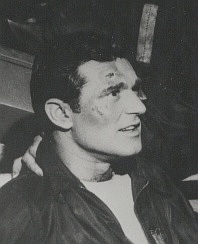
"People Are Alike All Over" is episode 25 of the American television anthology series The Twilight Zone.

Ross Rocklynne was the pen name used by Ross Louis Rocklin, an American science fiction author active in the Golden Age of Science Fiction.

The Best of L. Sprague de Camp is a collection of writings by American science fiction and fantasy author L. Sprague de Camp, first published in hardback by Nelson Doubleday in February 1978 and in paperback by Ballantine Books in May of the same year. The book was reprinted by Ballantine in May 1986. It was reissued in trade paperback and ebook editions by Phoenix Pick in December 2014. It has also been translated into German.

Sprague de Camp's New Anthology of Science Fiction is a collection of science fiction stories by American writer L. Sprague de Camp, edited by H. J. Campbell. It was first published in both hardcover and paperback in 1953 by Panther Books.
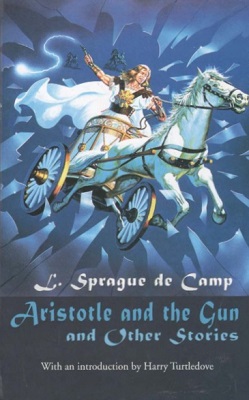
Aristotle and the Gun and Other Stories is a collection of short stories by American science fiction and fantasy author L. Sprague de Camp. It was published in hardcover in August 2002 by the Gale Group as part of its Five Star Speculative Fiction Series.

Rivers of Time is a 1993 collection of science fiction short stories by American writer L. Sprague de Camp, first published in paperback by Baen Books. All but two of the pieces were originally published between 1956 and 1993 in the magazines Galaxy, The Magazine of Fantasy & Science Fiction, Analog, and Asimov's Science Fiction, and the Robert Silverberg-edited anthology The Ultimate Dinosaur. The remaining pieces were first published in the present work.

The Tritonian Ring and Other Pusadian Tales is a 1953 collection of stories by American science fiction and fantasy author L. Sprague de Camp, first published in hardcover by Twayne Publishers. An E-book edition was published as The Tritonian Ring and Other Pasudian [sic] Tales by Gollancz's SF Gateway imprint on September 29, 2011 as part of a general release of de Camp's works in electronic form. The pieces were originally published between 1951 and 1953 in the magazines and anthologies Two Complete Science Adventure Books, Fantasy Fiction, Imagination Stories of Science and Fantasy, and Fantastic Adventures. The title story, the novel The Tritonian Ring has also been published separately.

Conan the Swordsman is a collection of seven fantasy short stories and associated pieces written by L. Sprague de Camp, Lin Carter and Björn Nyberg featuring Robert E. Howard's sword and sorcery hero Conan the Barbarian. It was first published in paperback by Bantam Books in August 1978, and reprinted in 1981. Later paperback editions were issued by Ace Books. The first hardcover edition was published by Tor Books in December 2002. The first British edition was issued by Sphere Books in 1978. The book has also been translated into Italian and French. It was later gathered together with Conan the Liberator and Conan and the Spider God into the omnibus collection Sagas of Conan.
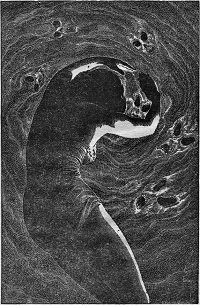
"The Eye of Tandyla" is a fantasy story by American writer L. Sprague de Camp, part of his Pusadian series. It was first published in the magazine Fantastic Adventures for May, 1951, and first appeared in book form in de Camp's collection The Tritonian Ring and Other Pusadian Tales. The story has also appeared in the magazine Fantastic for November 1965, the anthologies Time Untamed (1967), The Magic of Atlantis (1970), Wizards (1983), and The Mammoth Book of Seriously Comic Fantasy (1999), and the de Camp omnibus collection Lest Darkness Fall/Rogue Queen/The Tritonian Ring and Other Pusadian Tales (2014). It has also been translated into French, Spanish, Italian, German and Russian.
Bibliography of science fiction, fantasy, historical fiction and nonfiction writer L. Sprague de Camp:
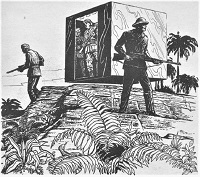
"A Gun for Dinosaur" is a time travel science fiction story by American writer L. Sprague de Camp as part of his Rivers of Time series. It tells the story of four men who travel into the past to hunt dinosaurs.

"Judgment Day" is an apocalyptic science fiction story by American writer L. Sprague de Camp. It was first published in the magazine Astounding Science Fiction for August, 1955, and first appeared in book form in the anthology The Best Science Fiction Stories and Novels: 1956. It later appeared in the de Camp collections A Gun for Dinosaur and Other Imaginative Tales, and The Best of L. Sprague de Camp, as well as the anthologies Great Science-Fiction, A Science Fiction Argosy, and Masters of Darkness III. The story has also been translated into German.

"Divide and Rule" is a science fiction novella by American writer L. Sprague de Camp. It was first published as a serial in the magazine Unknown from April to May, 1939 and first appeared in book form in de Camp's collection Divide and Rule. The story was revised for book publication. The first stand-alone book edition of the story was published as a large-print hardcover by Thorndike Press in September 2003. An E-book edition of the story was issued by Gollancz's SF Gateway imprint on September 29, 2011 as part of a general release of de Camp's works in electronic form.
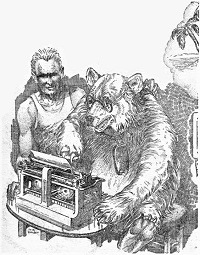
"The Command" is a science fiction story by American writer L. Sprague de Camp. An early treatment of the concept of uplift, it was the first in his Johnny Black series. It was first published in the magazine Astounding Science-Fiction for October, 1938, and first appeared in book form in the hardcover anthology Modern Masterpieces of Science Fiction. It later appeared in the paperback anthology Doorway Into Time and the subsequent de Camp collection The Best of L. Sprague de Camp. The story has also been translated into German.

"Living Fossil" is a science fiction story by American writer L. Sprague de Camp, on the concepts of human extinction and future evolution. It was first published in the magazine Astounding Science-Fiction for February 1939. It first appeared in book form in the anthology A Treasury of Science Fiction ; it later appeared in the anthologies Gates to Tomorrow, and The SFWA Grand Masters, Volume 1. The story has been translated into Danish, Swedish and Italian.

"Nothing in the Rules" is a contemporary fantasy story by American writer L. Sprague de Camp.

"The Hardwood Pile" is a contemporary fantasy story by American writer L. Sprague de Camp. It was first published in the magazine Unknown for September, 1940. It first appeared in book form in the collection The Reluctant Shaman and Other Fantastic Tales ; it later appeared in the collection The Best of L. Sprague de Camp, and the anthology Bestiary! The story has been translated into French and German.
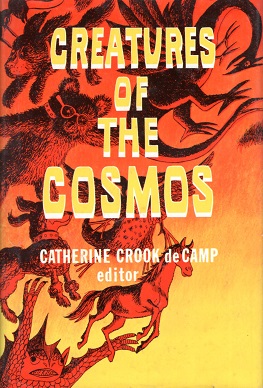
Creatures of the Cosmos is an anthology of fantasy and science fiction short stories for younger readers, edited by Catherine Crook de Camp. It was first published in hardcover by Westminster Press in 1977. It was the third such anthology assembled by de Camp, following the earlier 3000 Years of Fantasy and Science Fiction (1972) and Tales Beyond Time (1973), both of which she edited together with her husband L. Sprague de Camp.

"The Hibited Man" is a classic science fiction short story by L. Sprague de Camp. It was first published in the magazine Thrilling Wonder Stories for October, 1949. It first appeared in book form in the hardcover anthology My Best Science Fiction Story. It has also appeared in the paperback anthology The Shape of Things.



















